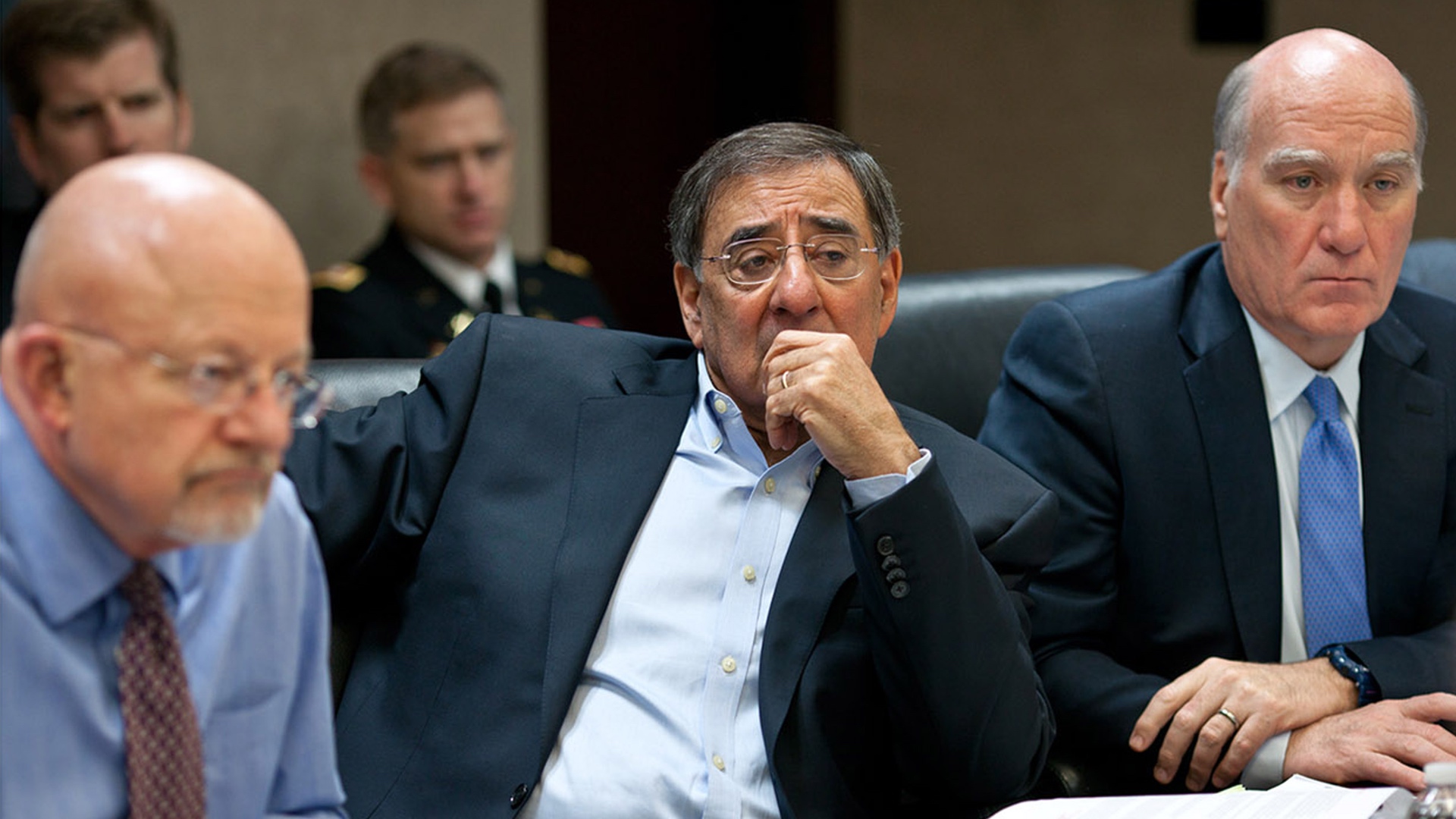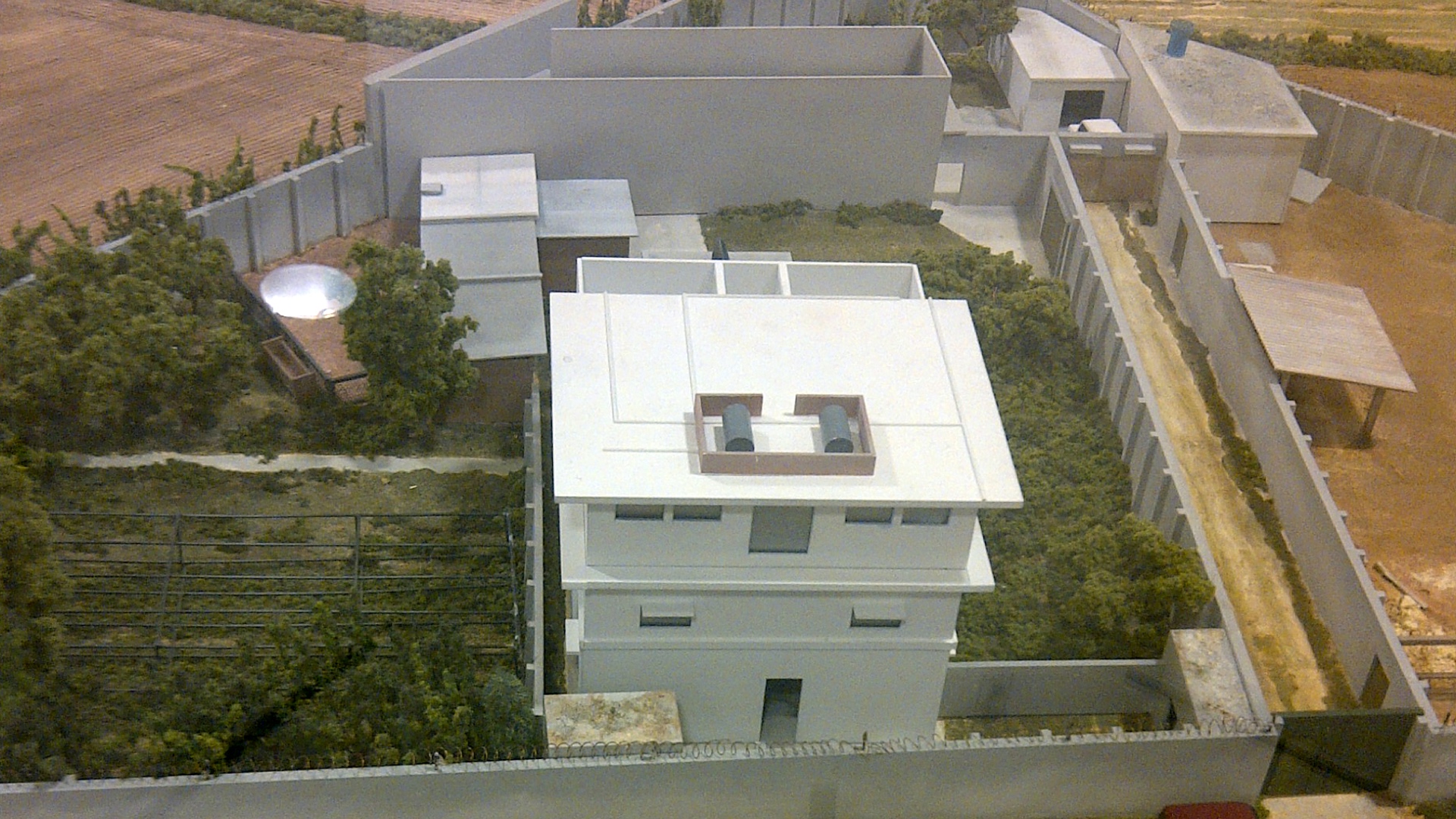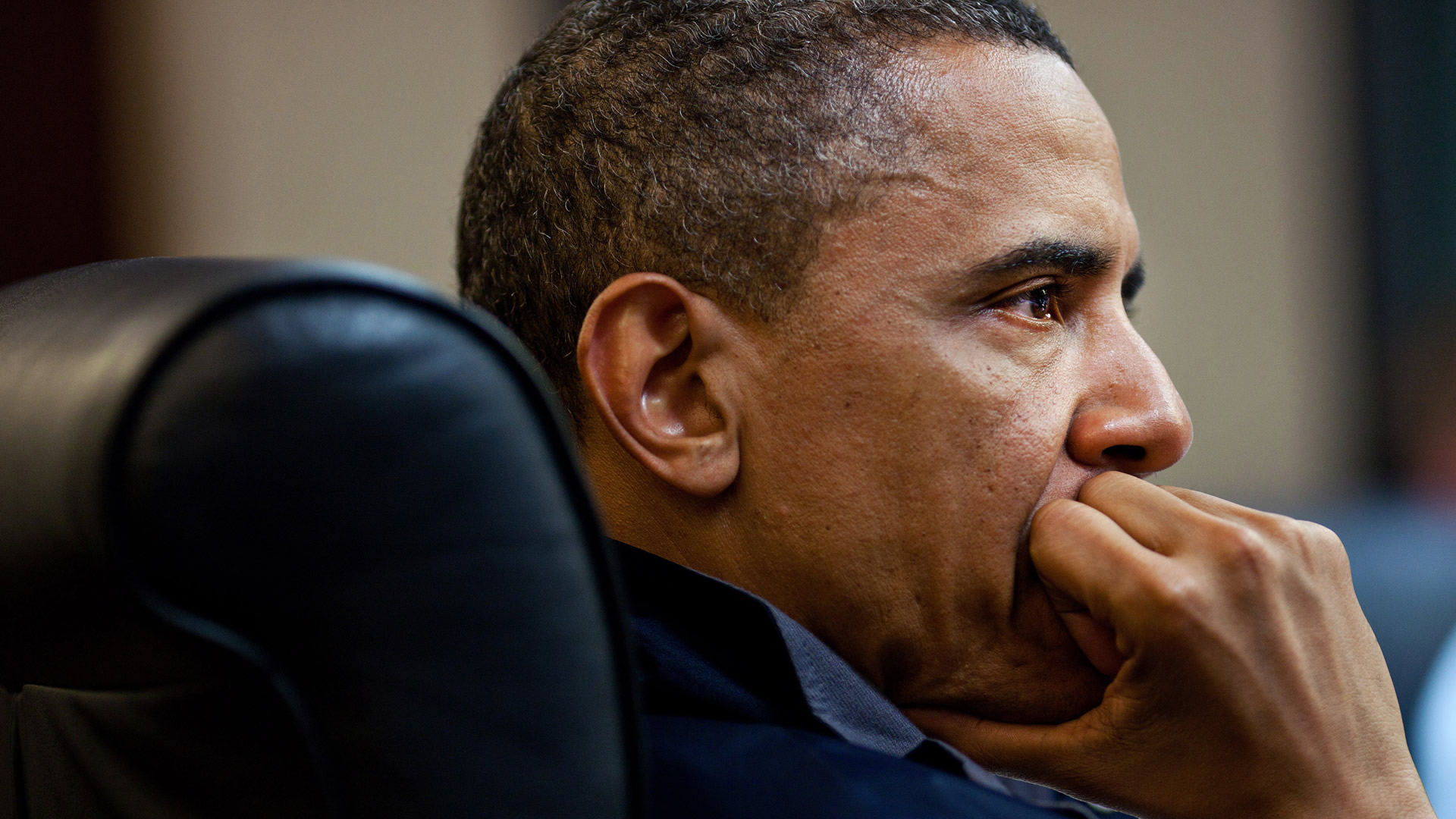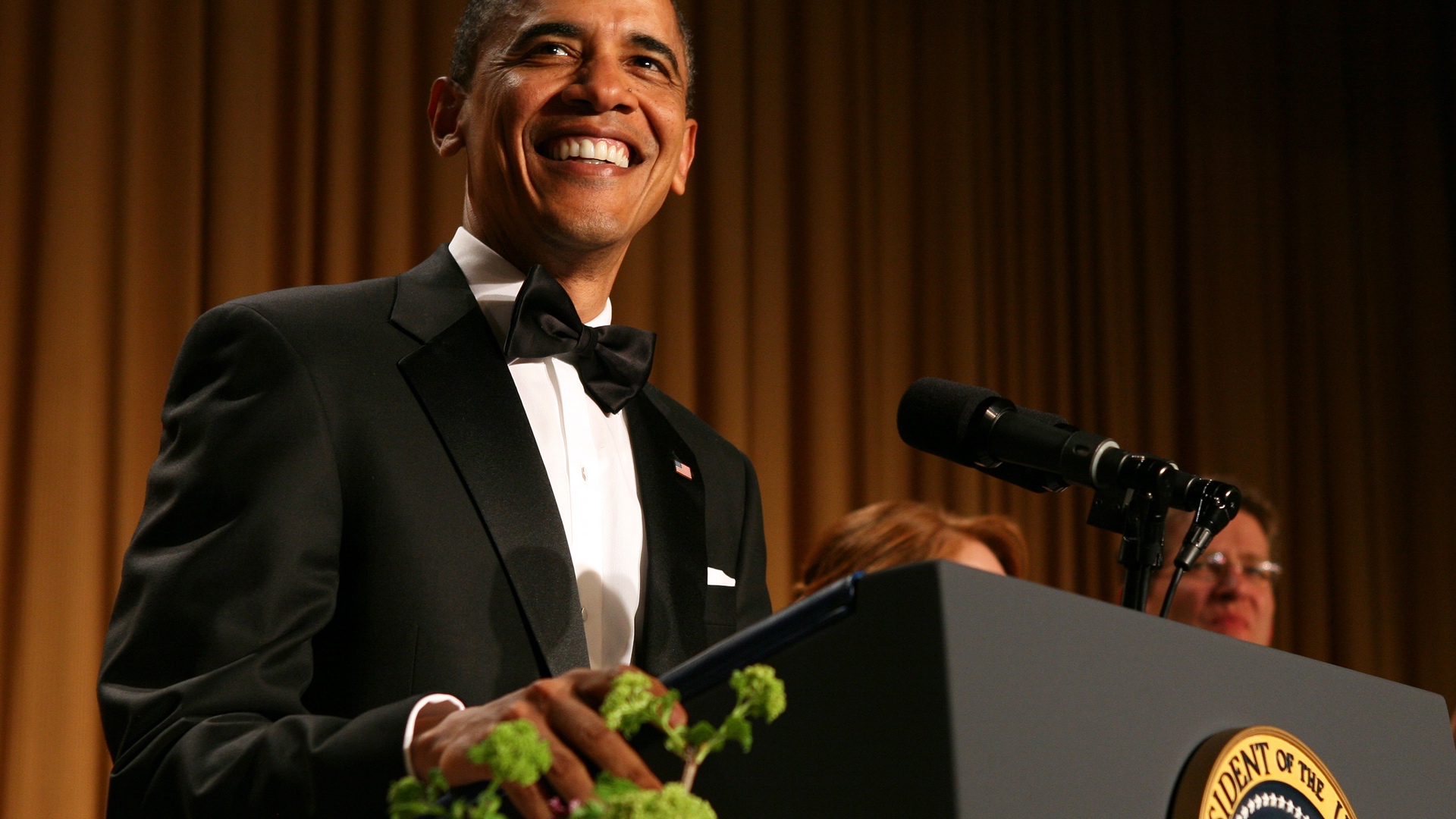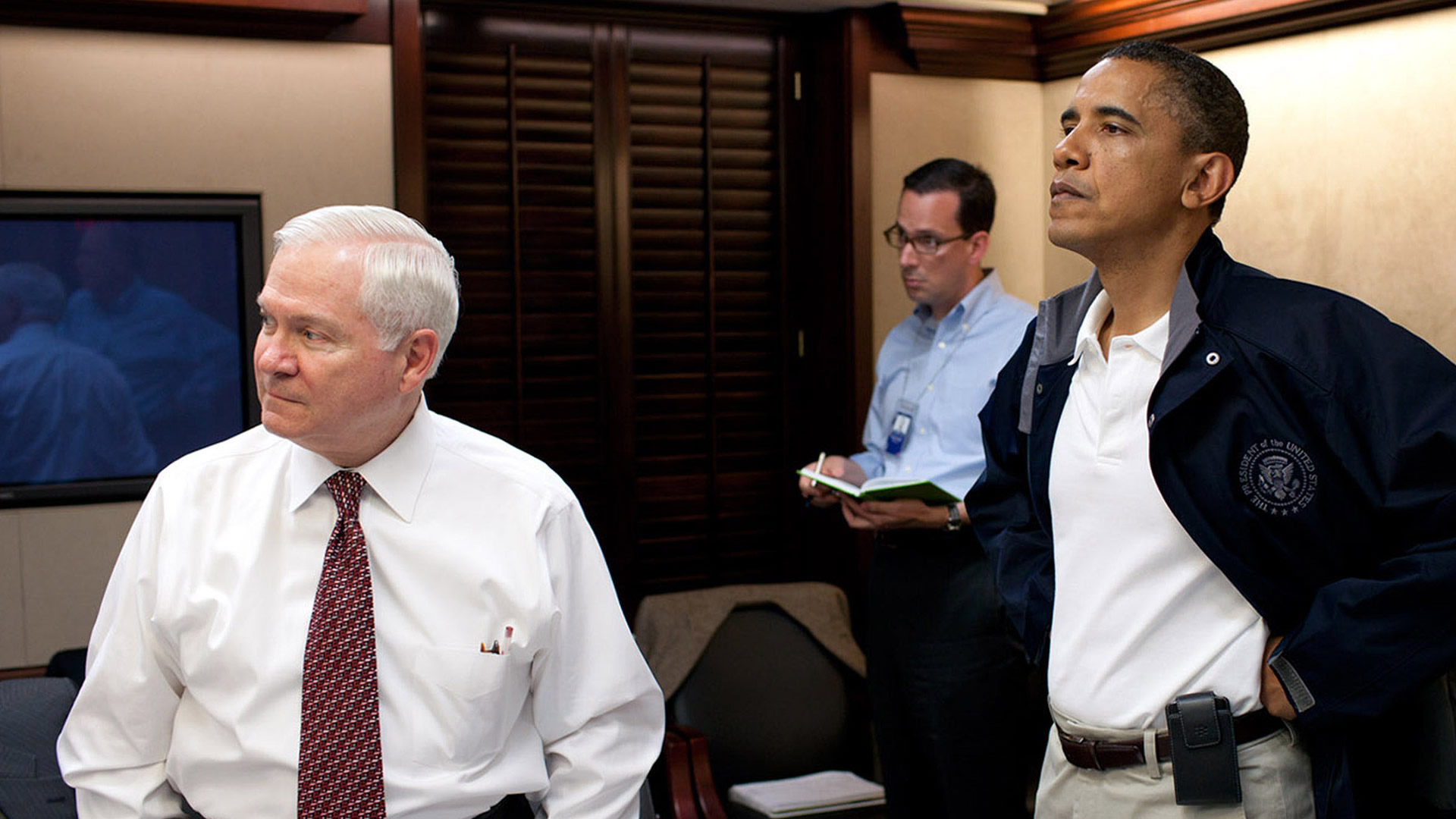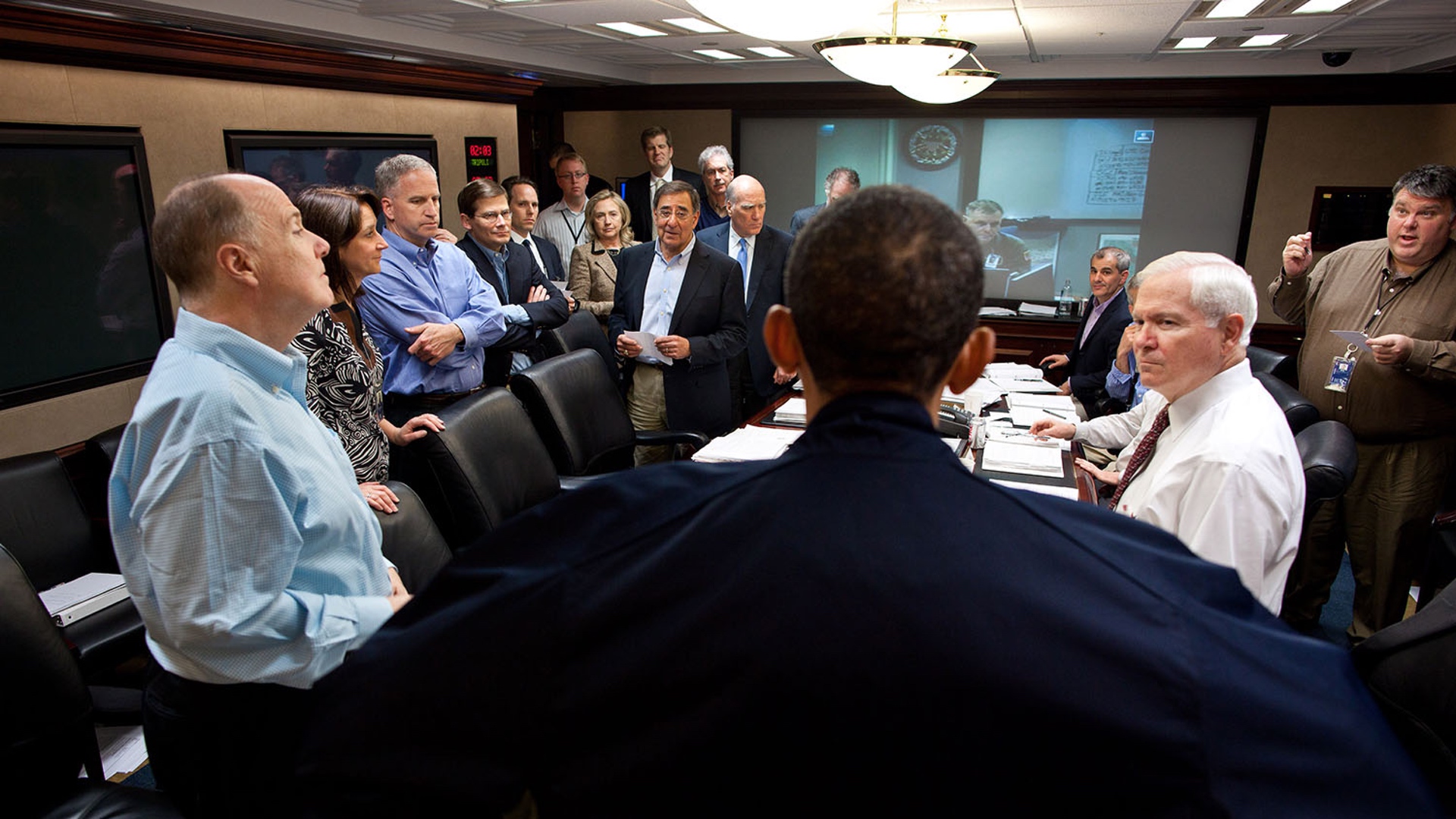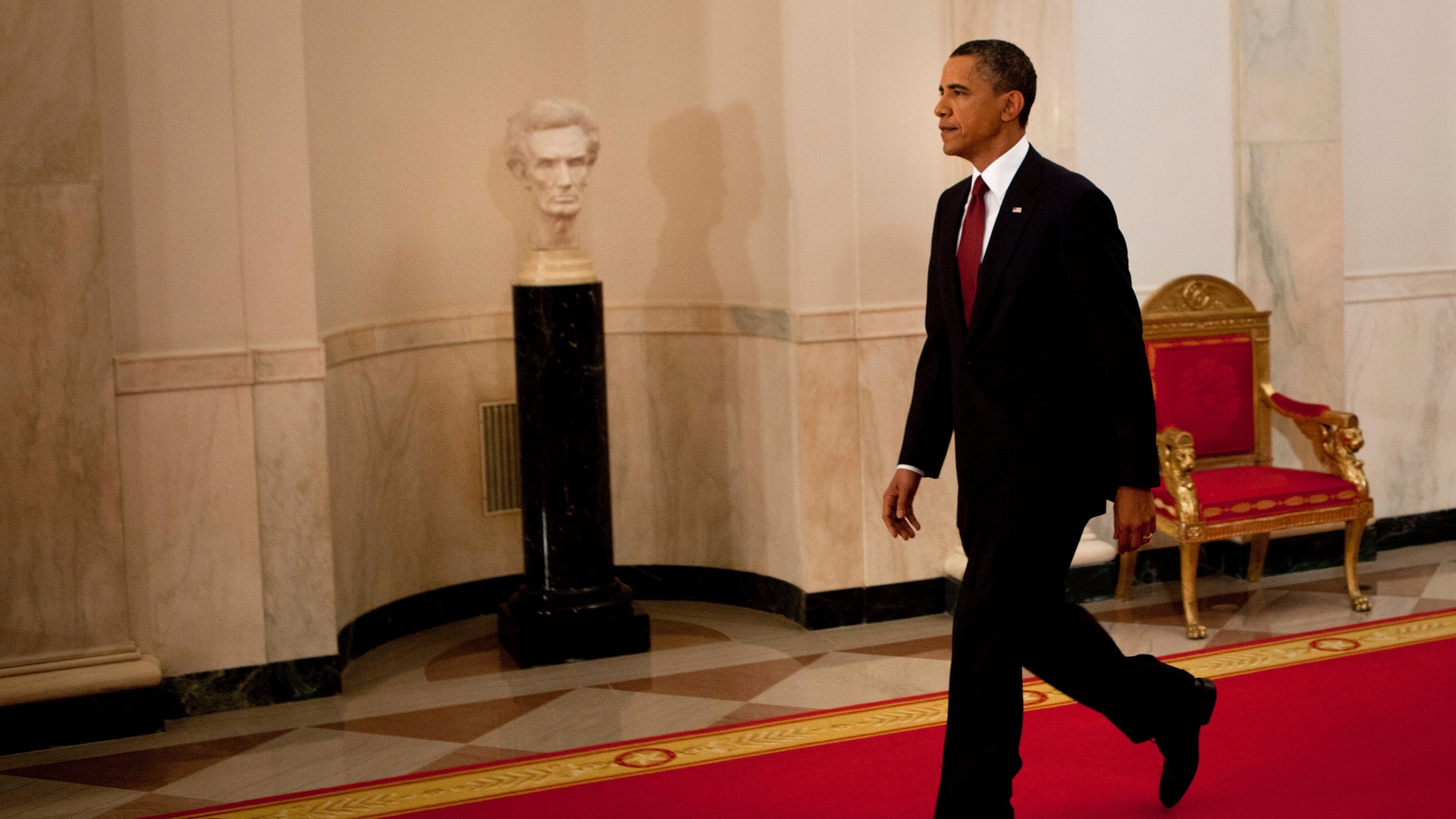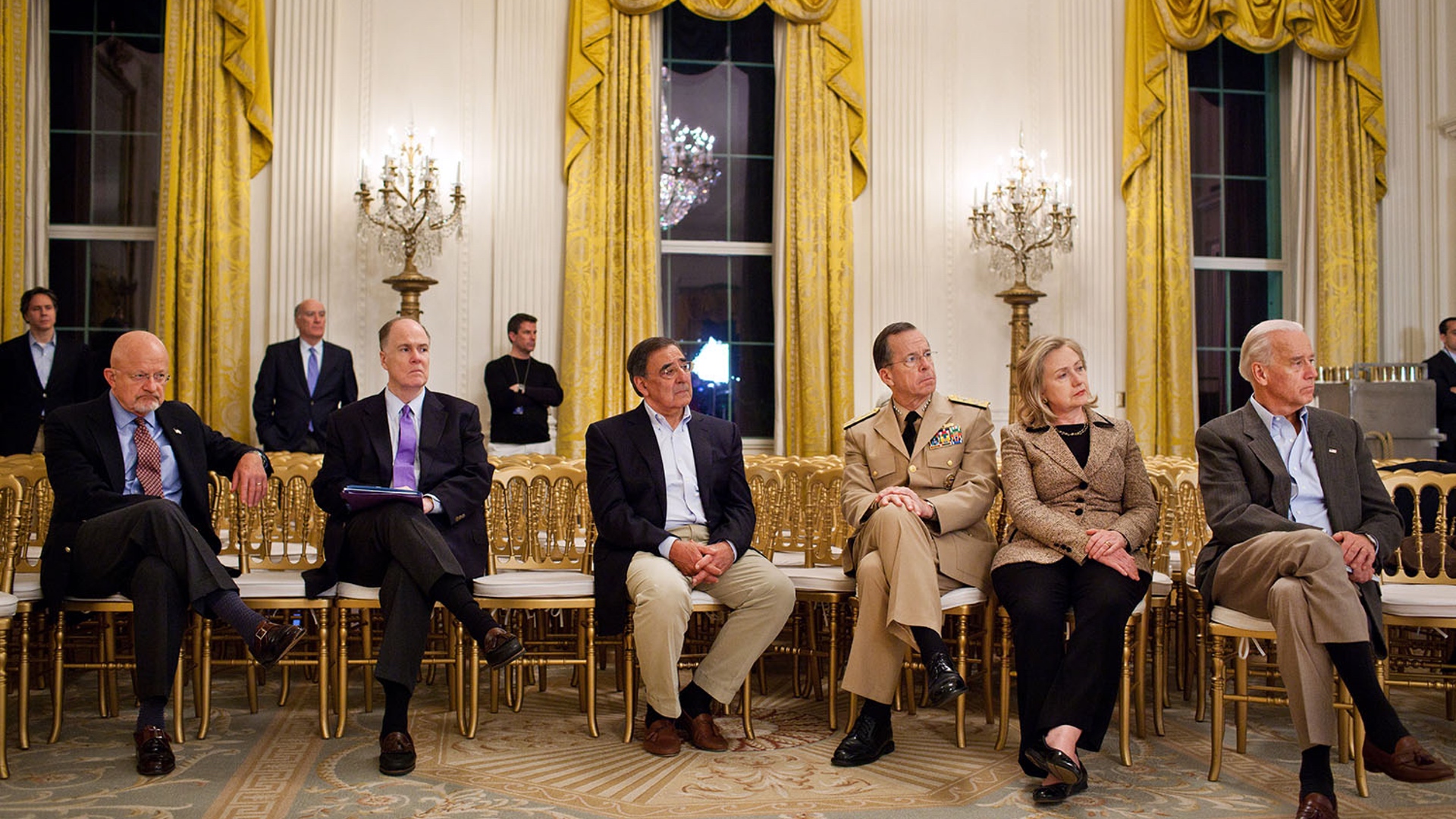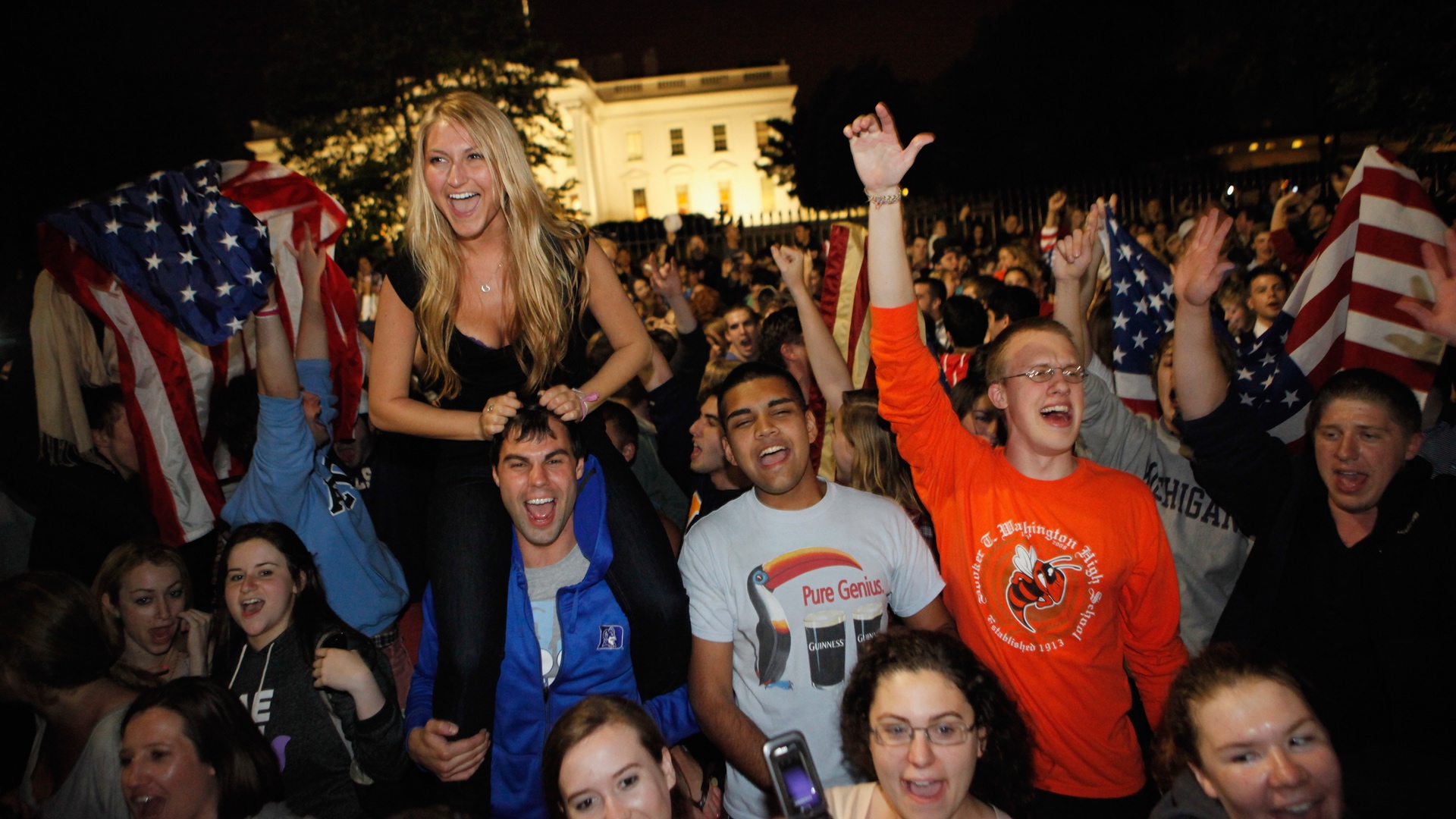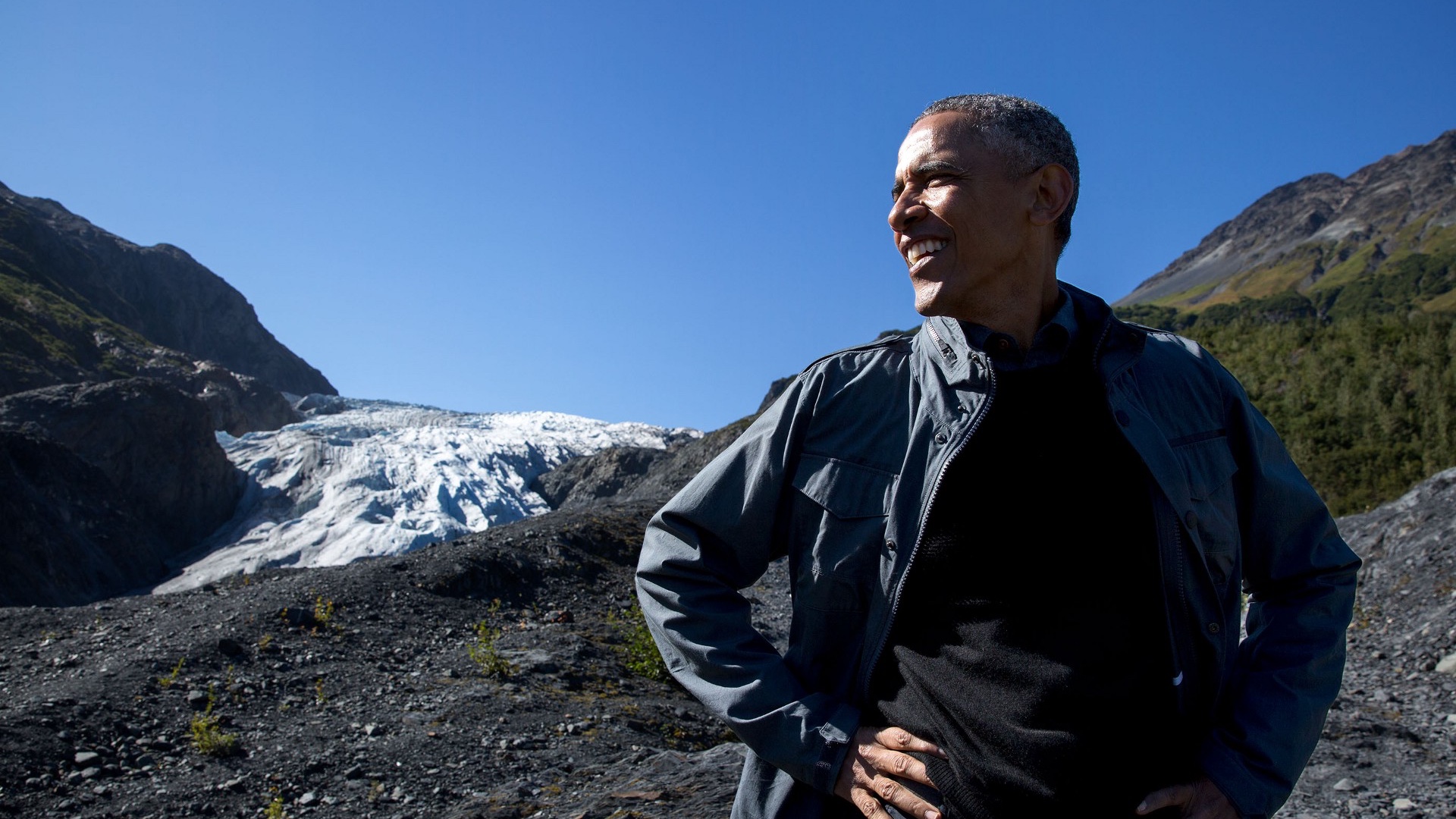When it came to Osama bin Laden, the man behind the horrific events of 9/11, Barack Obama was single-minded in his goal: to hunt him down, whatever it took. To achieve that goal, the president had to make a series of risky decisions, knowing that if the mission in Abbottabad, Pakistan, in the early morning hours of May 2, 2011, failed, his presidency would fail with it.
The president immediately went to the CIA and said, “I want to put a priority on finding Osama bin Laden.” It’s not that it wasn’t a priority before, but I think the president talked directly to the Director of the CIA and said, “No, you don’t understand. This is my number-one priority in terms of fighting Al-Qaeda. Put whatever resources you need into it.”
It’s hard to bring a laser-like intensity and focus to a mission after eight years…This was like an asterisk or something, like a footnote. And I think the president wanted to put heat on a bureaucracy, energize it. Once a month, they were going to brief us on Osama bin Laden and even if you come in and say, “We have nothing,” you have to come in. I think that was creating a culture of accountability. If we just hit dirt every month, we hit dirt every month, but we can’t just have it fade into the background.
And in the course of a year or so, they were able to track down a courier they thought would lead them to bin Laden. By the time I was called into it, late January, early February of 2011, the CIA had identified a large compound in Abbottabad, which was near the capital city of Islamabad.
Leon Panetta calls and says, “I’ve got to see the president. I’ve got to see him today and I can’t talk to you about what.” I said, “Leon, we don’t usually schedule those meetings…you’ve got to let me know. He says, “I can’t on the phone.” So Leon comes over with a gentleman who’s…the point person for tracking Osama bin Laden. And he walks the president through a series of photos…The guy goes, “We think that’s where Osama bin Laden is.”
Two things that aren’t appreciated enough are, number one, the incredible, meticulous, painstaking work of our intelligence officials to identify the compound in the first place. When you meet these folks…you see how it’s putting together a jigsaw puzzle, except there’s no picture on the front of the box to tell you how all these pieces fit together.
I went over to see the Deputy Director of the CIA, Mike Morell. He and a number of his officers outlined the compound. The question was, If Special Operation Forces were brought in to take down this compound and grab somebody from inside, how would we do it? It was really a tactical question. He told me that they thought bin Laden might be there but I didn't have the depth of the intelligence. It was really more of a discussion—if we were going to do a raid, what would that look like? I told Deputy Director Morell, “This is straightforward for us. We do compound raids every night, many times a night in Afghanistan. It’s a larger compound but the approach is still the same.”
We just didn't know if he was going to be there. They had all of these assessments and some people said it was an 80 percent chance and some said it was a 40 percent chance.
The president was very thoughtful. He brought in all the people he thought could provide him some different options for how we might go after bin Laden, if he was in the compound. But really, from February until the final decision to conduct a mission in early May, we never had intelligence that verified bin Laden was on the target. There were some who were very confident and there were some who were absolutely convinced that it was not bin Laden.
It’s an example of the man’s character. He knew he was putting his presidency on the line. If [the raid] had failed…it would have been the end of the administration.
What was impressive was I knew the president knew that if this went wrong, he would be a one-term president. It was never raised in the Situation Room…because we were trying to decide what was right for America.
And nobody would've criticized him for saying no, because the intelligence just wasn't there to give us a definitive answer. But instead he said, “Yes, let’s go do the raid,” knowing all along that if it went south, he would shoulder the burden.
In early 2011, military commanders presented President Obama with three possible options for attacking the compound at Abbottabad.
I presented one option. The last chairman of the Joint Chiefs of Staff was really responsible for the other options. One was kind of a massive bombing raid to level the compound. There was some concern that maybe there was a compound below the compound, that they had dug down deep and there could be a hide site where bin Laden was in a more secure area below the compound. There was concern that if you did a massive bombing raid, you were invariably going to kill women and children. And so I think the president discounted that option over a personal concern about the potential to lose innocent women and children. I don't think it was an intellectual call on his part. I think it was absolutely a moral call and a personal call. He knew we couldn't do that because that’s not what great societies and great people do.
The second option was a little bit more refined: Can we target this individual (that we referred to as Pacer) when he is out in the open with a single bomb, a very precise ordinance that hopefully wouldn't kill anybody other than the target? That was a little problematic. Our ability to do that in certain circumstances is very high, but in this case…it was going to be a little more difficult.
And the third option was the raid option, the Special Forces raid option. Now recognize at the time, because this was so secret, I had not had an opportunity to bring in the SEALs to really look over the plan. It was myself and a Navy captain who sat down and really kind of developed the plan. And it wasn't difficult. We’ll take a couple helicopters. We’ll fly the 162 miles in. We’ll fast rope onto or near the compound. We’ll surround the compound. We will breach the compound walls. We’ll go in, make our way to wherever bin Laden is and either capture or kill him, get back on the helicopters and come home. Not difficult in theory.
As time went on, it became more and more apparent that this [third option] would give the president an opportunity, one, to verify that we had in fact killed bin Laden or captured him. And if we did it right, we were going to protect the women and children. Again, I think that was very important for the president, recognizing we could save lives and at the same time verify the death or the capture of bin Laden.
The man has courage. The man will make the difficult call.
I tried to convey…the risks involved. There is always the risk of a helicopter going down. There is always the risk that one of our SEALs would get shot. There is always the risk of us inadvertently shooting or killing civilians. Those are all risks. But we trained for this. We rehearsed this mission many times. We were going to reduce as many of those risks as possible. But it was hardly risk free.
What I can tell you is that at one point in time the president said, “Well, can we do this mission?” And I told the president, “Well, sir, I have not had an opportunity to bring the SEALs in. We have not rehearsed it, so I can't tell you without some degree of anxiety that we can do this mission until I have an opportunity to really rehearse it and talk to the SEALs.” And he asked me how much time I would need and I said…“We can go rehearse this and then in three weeks I can come back and tell you categorically whether or not we can do this mission.”
As the 2011 White House Correspondents’ Dinner approached and speechwriters Jon Lovett, Jon Favreau and other staffers worked on possible jokes for the president to deliver, the entirely secret mission—code named Operation Neptune Spear—was unfolding in parallel.
So we spent three weeks, I pulled the SEAL Force together, along with the helicopter force. We had an opportunity to rehearse many, many times. We would fly the exact distances so we knew for a fact that the helicopters could do it. We did all the refueling. We built a mockup so that we could run through the tactical piece of this. And three weeks later, when we reconvened in the Situation Room, I was in a position to look the president in the eye and say, “Mr. President, we can do this mission.”
[The SEALs] had all just come back from Afghanistan so they were on leave…We were able to pull them together without anybody from the rest of their unit knowing anything was going on because they just assumed these guys were…someplace with their family…Frankly, they were not happy that they had been called in off-leave. We moved them down to another location before we briefed them on what the target was. So initially, they did not know. But soon after convening them, we had to let them know so they could understand the importance of this mission.
On the night of April 28, 2011, President Obama, Vice President Biden and his top national security advisors gathered in the Situation Room.
I have a rule that I’ve kept and it’s one of the reasons why the president and I get along as well as [we do].…I said “I want to be the last guy in the room to give you my advice. You’re president. Whatever you do, unless I morally disagree with you, I’m going to support.” And so, on the really tough issues, I always wait to give him my advice alone. And he said, “Okay, it’s time for a decision. And there were several options put forward. One, do we make a couple more passes to be sure bin Laden was there, which theoretically could be detected, and if they were [detected] he may flee? Or do we move now?
He went around the table and everyone except two people didn’t waffle…director of the CIA Panetta said Go and the director of the Defense Department [Robert] Gates said “Don’t go.”
And I’m the last guy…and I said, “Mr. President, I think you should take one more pass.” Then I walked up to the Oval with him and I said, “Mr. President, look, follow your instincts. Follow your instincts. I think he’s there but follow your instincts.”
As we went through the planning of the raid, he made certain that he talked to everybody in the room, that he listened. He’s a very good listener. And I think this is a quality you hope every president has. He listened to all the arguments, pro and against…to ensure he was pulling out the best possible options for the bin Laden raid.
I just remember looking at the president and realizing, He’s going to have to make this decision that has all this downside risk. You know, a fire fight, a helicopter crash, a complete crisis in US-Pakistan relations, without even knowing that the guy was there.
He wanted to make absolutely certain that we had reduced the risk to our soldiers, that we had reduced the potential civilian casualties, that our chances of achieving the mission were high. For a man who had no military experience prior to coming into the office, his thought process and how he went about engaging people was pretty remarkable.
So he understood the impact of, if the intelligence was wrong, if we were on the wrong target and we had gone into Pakistan and inadvertently killed innocent Pakistanis, this would not look good on the international scene. It would not look good for this presidency, it certainly wouldn't look good for the Special Operations Forces. So that was a lot of the risk. In Afghanistan, when we conducted missions, we almost always knew that the individual we were going after was on the target or we weren't going to do the mission. Very rarely did we go in as blind as we were going into Pakistan.
But when the president called me on Friday afternoon, we talked through it. He wished the men good luck, said he had a lot of faith and confidence in us, and that meant a lot to us.
That Saturday afternoon, I was scheduled to meet with the president to go over jokes for [the Correspondents’ Dinner] that night. I walk into the outer Oval with Jon Lovett and David Axelrod, and they said that the president was on the phone with the general in Afghanistan so our meeting was going to have to wait.
The president opens the door, invites us in. He’s tossing a football around, smiling, looking normal. He said, “I love all the jokes, everything’s great.”
There was one in there about Tim Pawlenty who had been running for president and had dropped out. The joke was that poor Tim Pawlenty had such promise but for that unfortunate middle name, bin Laden. And it was sort of a joke on himself for being named Hussein.
And [the president] said, “I would just use another foreign-sounding name. Let’s use Hosni Mubarak or something.” I said, “That’s not funny.” And he said, “Trust me, bin Laden’s played out, everyone’s going to expect that. This will be funny. Let’s use this.” And so he changed it.
Then, right before the speech, he called and said, “I’m probably going to remember this on my own, but would you write at the end of the speech May God bless America and may God keep our troops safe? I was like, That’s a weird thing to add into a Correspondents’ dinner speech.
The evening of May 1, 2011, Bill McRaven and the mission commanders were intent on their screens in Afghanistan while the president and his team watched remotely from the Situation Room.
We had originally planned to do the mission on a Saturday—the same day as the Correspondent’s Dinner. As it turned out, my Air Force weatherman came to me and told me we had some low-lying fog in some of the valleys where the helicopters were going to pass through…I elected to roll it back 24 hours just to make sure the conditions were as good as they could be. It was a moonless night, part of the reason we had chosen early May to do this.
We literally had the phases of the moon to deal with, whether or not the guys could get in and out.
The day of the mission, prior to the boys getting on the helicopter, I went out and talked to them, like a coach coming in to talk to the team before they go out for the big game. But they were very poised. They had their game faces on, very professional as always. I didn't sense any greater anxiety than on a lot of missions in [either] the pilots and their crew [or] the SEALs. They were just taking this in a businesslike manner.
Their professionalism…their stick to it-ness, and the degree to which they felt as if they were working on behalf of the families of all those who had been lost, that doesn’t always come through as much.
I was communicating directly with the CIA director, Leon Panetta, in their little kind of situation room at Langley Headquarters. I only had one video teleconference screen. The president and his team were also listening in and they could see me, but the picture on my screen was of Director Panetta. Off to my left, I had all of my tactical screens up, my operational screens up.
When Director Panetta gave me permission, I turned to the guy we call the Joint Operations Center, the JOC, and say, “Okay, launch the mission.”
At 1 am in Pakistan, the SEALs find and shoot the man they believe to be Osama bin Laden.
When word came across from the ground force commander, his exact words were,“For God and Country, Geronimo, Geronimo, Geronimo.” On our end, I don’t recall any whooping and hollering. We were in the middle of the mission. You could tell from the Joint Operations Center that people were happy. That lasted all of about a microsecond and they kind of got back to business. What I didn't know was whether Geronimo (the code word for bin Laden) was alive or dead.
Contrary to what a lot of people believe, this was not a kill mission. We had set the rules of engagement to say that if bin Laden is absolutely positively not a threat, if he had his arms up and did not have a suicide vest on, then by the rules of engagement, we were required to capture him. That wasn't the case but again, for about 20 seconds there, I didn't think to ask that question. Then, all of a sudden it occurred to me, so I had to ask the ground force commander: Is he EKIA, enemy killed in action?
Very quickly they came back and said, “Yes, enemy killed in action.” We had been there for 15 minutes or so at the time.
After killing bin Laden, the SEALs discovered a “treasure trove” of papers and computers on the second floor of the compound. McRaven gave them 30 minutes to gather as much material as they could, as many hard drives, then get back to the helicopters.
When they crossed the border from Pakistan into Afghanistan, there was clearly a moment of relief. But the mission wasn't over. You can do great work on target and then you goon it up later because you didn't do the forensics right…You didn't do something right. So I knew we needed to get the forensics. I needed to make sure it was bin Laden, and that the report to the White House was correct. A lot of little details still needed to be done.
The operation itself was extraordinary but to see how our special forces and Bill McRaven–who I think people have started to realize is a real American treasure–and the whole SEAL team practiced, built a compound, fought through everything. Let’s think through every possibility, every contingency. That kind of work is what ultimately made [the operation] successful.
The president called to say congratulations. And I cautioned him right then and there. “Sir, I don't know whether it’s Bin Laden or not.”
I said, “Look, it’s going to take me a few minutes. I need to run to the airfield…I need to personally look at the body…and I will come back and let you know. I drove very quickly over to where the SEALs were. The helicopter blades were literally just winding down as I approached. They offloaded the remains onto a truck, brought it into the hangar where we were and pulled the remains off the hangar. They were in a heavy rubber body bag and I zipped down the body bag to take a look and obviously he didn't look too good after taking a couple rounds in the face…But it was pretty clearly him.
Having said that, we knew bin Laden was 6'4" to 6'6", so I physically removed the body from the body bag and began to stretch him out so I could see the length of the remains. And, frankly, I realized that having a three–star admiral stretching out the remains of bin Laden was probably not the most appropriate thing to do, but I still wanted to know whether or not the remains were in fact tall enough to be bin Laden. There was a young SEAL standing nearby and I asked, “Hey, son, how tall are you?” He looked at me kind of funny, and said, “Well sir, I'm 6'2".
And I said, “Good, come here. I want you to lie down next to the remains. He said, ‘I’m sorry, sir, what?’ I said, ‘You need to lie down next to the remains.’” So I had him lie down next to the remains and, of course, the remains were a couple inches longer.
I headed back to the Command Center, got back up on the video conference with the president…[and] I said, “Mr. President, obviously, without DNA, I can't confirm that it’s bin Laden but it looks like him, everything indicates it’s bin Laden. I said offhandedly, “Oh, by the way, I had a SEAL who was about 6'2" lie down next to the remains and they were a couple inches longer.” I didn't really think anything about the comment.
We had lost a helicopter on the target and it was about a $60 million dollar helicopter. So the president said, “Okay, Bill, let me get this straight. We had $60 million for a helicopter and you didn't have $10 for a tape measure?” And you know, you couldn't help but smile. It had been a long, tough night and, and even though there was nothing humorous about the situation, it was important to convey the humanity of the moment.
Meanwhile, Sunday in Washington, D.C., Obama’s staff is recovering from the Correspondents’ Dinner.
What I recall most about that day is that everybody’s a little tired and wearing their sweatpants and going to movies. And we all get phone calls that something is happening.
My wife actually woke me up because I had gone to bed early. “You’d better get up because I think they just got bin Laden.” I looked at my Blackberry and it was blowing up with messages from the White House.
I remember how many people came down late at night to cheer and scream and you could hear that outside [the White House].
The way [the president] just went about the business of tracking him down without any fanfare at all sends a very important signal about his attitude toward national security.
The next week you start to see a turning point in how people perceive the president and his strength and leadership. That’s one of the lessons we've learned over the course of time. People want to see and know how the president is thinking and feeling and they want to see him exhibiting strength.
What was striking was how calm he was the day before. You would not have known that he had already given the order that he knew could possibly have ended his presidency.
That was a period of time where the country rejoiced. And it’s rare that you break through in a way that we did during that week. And then, of course, as the story unfolded, people learned more about how many unknowns there were and how it really took courage and leadership to make that decision.
He was as calm as could be and that’s the guy I know. His fundamental way of operating is to make the best decision that he can based on the facts, and live with it. That’s an important quality in a president.
A couple days later, I had a chance to come back to the United States. I was briefing the Congress. I got a call from the White House that the president would like to see me. So we went over to the Oval Office. After some congratulatory remarks, the president said, “Bill, I've got something to give you.” It was a plaque with a tape measure on it and it said, If we have $60 million for a helicopter, I think we can find $10 dollars for a tape measure. Next time, bring the tape measure.
Share "Bin Laden: Priority Number One"
